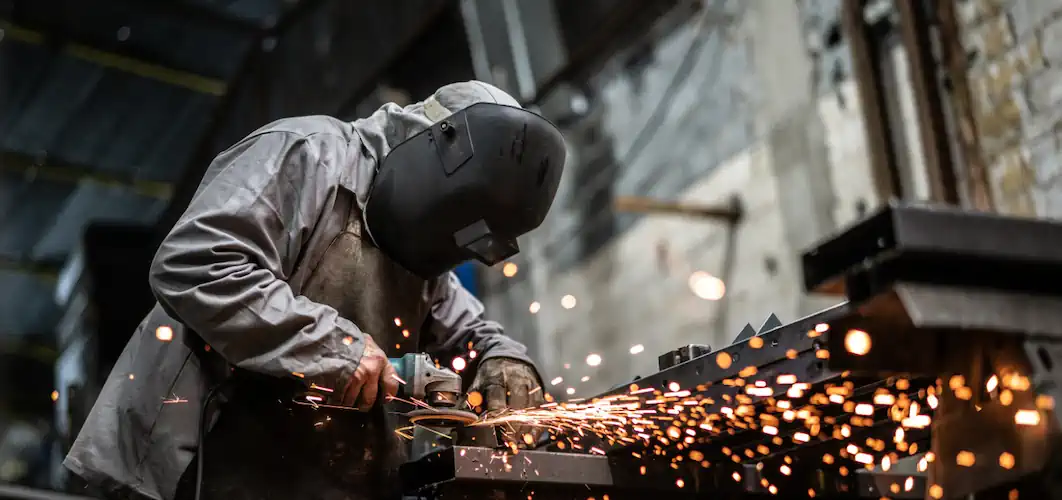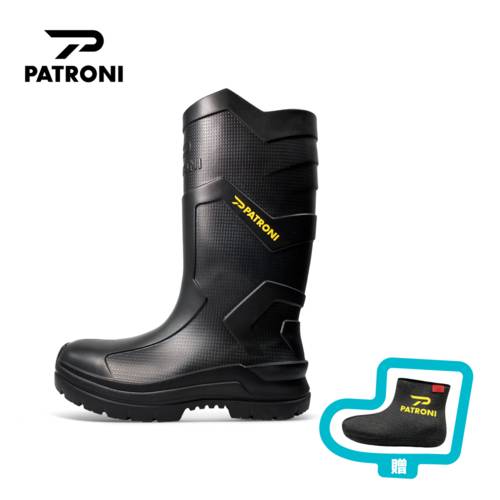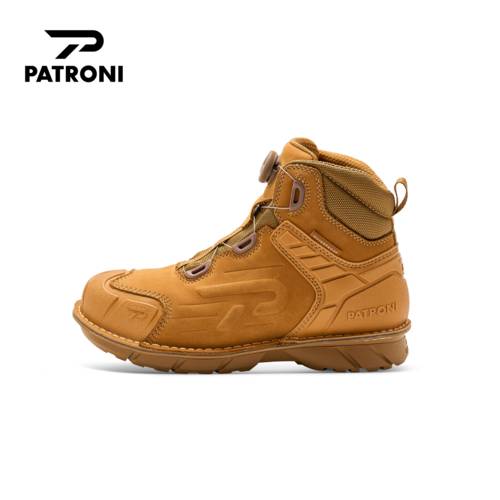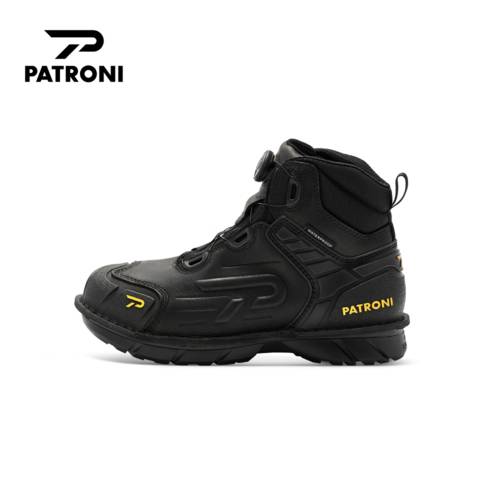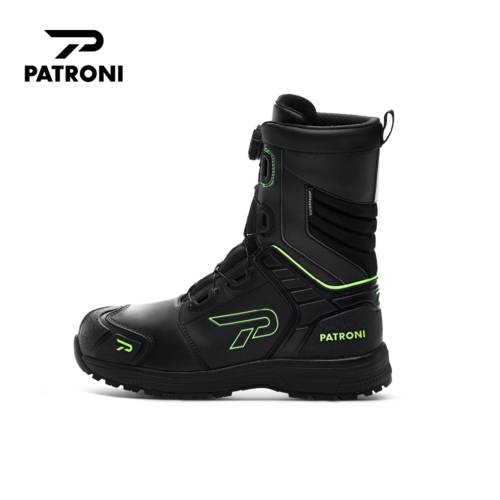Safety Glasses vs. Safety Goggles: Choosing the Right Eye Protection for Your Needs
Are you often confused about whether to opt for safety goggles or safety glasses to protect your eyes? Is there even a difference between the two? You're not alone in this dilemma.
Both safety glasses and safety goggles fall under the category of Personal Protective Equipment (PPE), serving to shield workers' eyes from debris, splashes, vapors, and sparks.
According to the U.S Bureau of Labor Statistics, around 20,000 eye injuries occur annually in the workplace. The extent of these eye injuries varies from simple eye strain to permanent eye damage or long-term vision loss.
Don't compromise you and your workers' safety - read on to learn more about the differences between safety glasses and safety goggles, as well as when and where to wear the appropriate eye protection for various industries and scenarios.

What’s the Difference Between Safety Glasses and Safety Goggles?
While safety goggles and safety glasses provide protection, they have distinct characteristics and are designed for different purposes. Understanding their differences will help you make an appropriate choice based on your needs.
Safety Glasses
Safety glasses resemble regular eyeglasses but with added safety features. These glasses are designed to withstand head-on and side impacts, boasting impact-resistant lenses crafted from durable materials like polycarbonate.
Primarily, safety glasses shield your eyes from flying debris, dust, and other small particles, making them indispensable across various industries such as construction, manufacturing, and home improvement.
When selecting safety glasses, consider these key features:
- Lens Size: Opt for larger lenses to ensure more extensive coverage and enhanced protection for your eyes.
- Lens Shape: Choose a lens shape that fits correctly on the face, minimizing gaps and offering superior protection against hazards. Many safety glasses feature wraparound designs for optimal molding.
- Side Shields: Integrated side shields provide additional defense by preventing particles or objects from entering the eye area from the sides.
- Lens Tint: Select from various lens tints, including clear, gray, and amber, to ensure adequate visibility in different lighting conditions.
Prioritize your safety by investing in high-quality safety glasses equipped with these essential features.

Safety Goggles
Safety goggles offer a higher level of protection than safety glasses. They provide a seal around the eyes, offering better coverage and protection against liquids, chemicals, and fine particles. Safety goggles are commonly used in factories, steel mills, laboratories, research facilities, and healthcare settings.
Unlike safety glasses, goggles have a secure and snug fit to prevent leakage or exposure to hazardous substances. They often feature indirect ventilation to reduce fogging and increase comfort.
When selecting safety goggles, consider these key features:
- Frame Style: Opt for a frame style that provides a comfortable and secure fit for extended wear.
- Ventilation: Select the appropriate vent style—direct, indirect, or sealed—to ensure adequate airflow while keeping out harmful particles and liquids.
- Lens Material: Look for goggles with impact-resistant lenses made from durable materials like polycarbonate, ensuring reliable protection against impacts and abrasions.
- Anti-Fog Coating: Choose goggles with an anti-fog coating to maintain clear vision, even in humid or high-temperature environments.
- Adjustable Straps: Ensure the goggles have adjustable straps for a customizable and secure fit, accommodating various head sizes and shapes.
Can You Substitute One for The Other?
When you wear safety glasses, and often wonder if safety goggles would be a substitute or alternative, remember that these two are designed for different hazardous environments.
Safety goggles provide more coverage around the eyes; they are used when there is a higher risk of debris or chemicals getting into the eyes from various angles, such as in laboratories or different hazardous environments. On the other hand, safety glasses are more lightweight and may offer less coverage but are still effective for protecting against impacts and flying debris in many situations, such as woodworking or certain sports.
In some cases, safety goggles may be able to substitute for safety glasses, especially if they provide a similar level of impact resistance and meet relevant safety standards. However, it's essential to consider the specific hazards you'll encounter and ensure that the eye protection you choose provides adequate coverage and protection for those hazards. Always follow the recommendations and requirements outlined by safety regulations and guidelines in your workplace or activity.

Factors To Consider When Choosing Eye Protection
When selecting eye protection, several factors should be considered to ensure you choose the most suitable option. Let's explore key factors that will help you make an informed decision.
Impact Resistance
One of the most critical factors to consider is the impact protection for your eyes. Look for protective eyewear that meets ANSI Z87.1 standards, which certify their impact resistance capabilities. This ensures they can withstand high-velocity impacts from flying objects.
The ANSI Z87.1 certification is divided into different levels, with higher numbers indicating greater impact resistance and superior protection. For example, glasses or goggles with a rating of Z87+ provide excellent protection against high-velocity impacts. Always check for the ANSI certification to ensure your safety frames meet the required safety standards.
Lens Materials
The lens material plays a vital role in determining the durability and clarity of your eye protection. The most common lens materials used in safety glasses and goggles are polycarbonate and Trivex. Both materials are impact-resistant and offer excellent optical clarity.
Polycarbonate lenses are widely used due to their lightweight nature and high impact resistance. They are more scratch-resistant than other lens materials, making them ideal for rugged environments. Trivex lenses, while slightly heavier, offer better optical clarity and are an excellent choice for individuals with higher prescription glasses needs.
ANSI Standards for Eye Protection
The American National Standards Institute (ANSI) sets the standards for various safety products, including face shields and eye protection. When choosing safety glasses or goggles, look for the ANSI Z87.1 certification mentioned earlier. This certification ensures that the eye protection meets specific requirements for impact resistance, optical clarity, and coverage.
The ANSI Z87.1 certification also includes varied ratings for additional features, such as protection against droplets, splashes, dust, and fine particles. Depending on the nature of your work, you may need additional certifications like Z87+W for metal casting and welding applications or Z87+D for protection against chemical droplets and splashes.
Additional Features to Look For In Eye Protection
In addition to impact resistance, lens materials, and frame styles, there are several additional features you may want to consider when selecting eye protection. These features can enhance your overall safety and comfort. Let's explore some popular options available in the market.
Anti-Fog Coating
Working in humid or temperature-varying environments can cause lenses to fog up, compromising your vision. Anti-fog coatings are available for safety glasses and goggles and help prevent fogging. They provide a clear view even in challenging conditions, ensuring you can work efficiently and safely.
UV Protection
Ultraviolet (UV) radiation from the sun harms your eyes, leading to conditions like cataracts and macular degeneration. Look for safety glasses or goggles that offer UV protection. Ensure they are labeled with a UV400 rating, which indicates they block 99.9% of UVA and UVB rays.
Prescription Options
If you require vision correction, you can opt for safety glasses or goggles with prescription lenses. Many manufacturers offer prescription options, allowing you to maintain clear vision while ensuring adequate eye protection. Consult an optician or eye care professional to determine the best prescription option that suits your needs.
Anti-Scratch Coating
Scratches on the lenses can impair your vision and reduce the overall lifespan of your eye protection. Many safety glasses and goggles have an anti-scratch coating that enhances durability and prevents scratches. This feature ensures long-lasting clarity and optimal performance.
Wearing Eye Protection, The Right Way
Selecting the perfect protection is crucial for maintaining clear vision and preventing eye injuries in various industries and activities. Whether you need safety glasses or safety goggles, understanding the differences and considering key factors will help you make an informed decision.
Remember to properly maintain and care for your eye protection to ensure longevity and effectiveness. Regularly inspect them for signs of damage and replace them when necessary. Don't compromise on your safety. Invest in high-quality PPEs like eye protection to improve workplace safety.
Frequently Asked Questions:
1. How to care and maintain eye protection?
Clean your eye protection regularly using mild soap and water. Avoid harsh chemicals or abrasive materials that can damage the lenses or coatings.
Dry your eye protection with a clean, lint-free cloth to prevent water spots or streaks.
Store your eye protection in a protective case when not in use to prevent scratches and damage.
Avoid placing your eyewear face down on hard surfaces to prevent lens scratches.
Inspect your eye protection regularly for any signs of damage or wear. If you notice cracks, scratches, or loose parts, replace your eye protection immediately.
2. When to replace safety glasses or safety goggles?
While safety glasses and goggles are designed to be durable, they are not indestructible. Over time, the lenses may become scratched or the frames may weaken. Know when to replace your eye protection to ensure continued safety.
Here are some signs that indicate it's time for a replacement:
- Visible cracks or damage to the safety lenses or frames.
- Deep scratches that impair your vision or compromise the integrity of the lenses.
- Loose or damaged hinges, temple arms, or nose pads that affect the fit and stability.
- Lenses or frames that no longer meet the ANSI Z87.1 certification or other required safety standards.
- Outdated or worn-out eye protection that does not provide adequate protection against current hazards.
3. Are safety glasses as good as safety goggles?
Safety glasses typically have side shields designed to provide basic eye protection against impacts from the front. They are lightweight, comfortable to wear for extended periods, and suitable for most general-purpose tasks.
Safety goggles, on the other hand, provide a more comprehensive seal around the eyes, offering better protection against hazards from multiple directions. They are often used when there is a higher risk of splashes, chemical exposure, or airborne particles, offering a more secure barrier against these hazards.
Safety goggles offer a higher level of protection than safety glasses, especially in environments with significant risks of chemical exposure or airborne particles. However, both meet certain safety standards, and the choice between them depends on the hazards in your work environment and your personal comfort preferences.
4. Where can I buy safety glasses or safety goggles?
Look no further than Oteplace, your premier B2B online sales platform connecting suppliers directly with users. With Oteplace, you have the flexibility to customize your safety glasses through OEM or ODM options while easily requesting quotes from sellers.
Connect with a diverse range of safety glasses producers, all hailing from high-quality backgrounds and meeting rigorous inspection and certification standards. Trust Oteplace to provide you with access to top-tier safety eyewear tailored to your specific needs.





